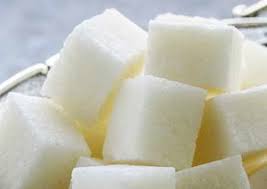CAMPHOR













CAMPHOR
CINNAMOMUM CAMPHORA
FAMILY: Lauraceae
SYNONYMS
Laurus camphora, true camphor,hon-sho,laurel camphor, gum camphor, Japanese camphor, formosa camphor
GENERAL DESCRIPTION
A tall, handsome,evergreen tree, up to 30 meters high, not unlike the linden . It has many branches bearing clusters of small white flowers followed by red berries. It produces a white crystalline substance, the crude camphor, from the wood of mature trees over fifty years old.
DISTRIBUTION
Native to japan and Tiwan principally, also China;cultivated in India, Ceylon, Egypt, Madagascar, southern Europe and America.
OTHER SPECIES
There are many species of camphor; the ho-sho variety produces ho leaf and ho wood oil; the chinese variety produces apopin oil; the Japan and Tiwan type, known as hon-sho or true camphor, produces two chemotypes; camphor-safrol (Japan) and camphor-linalol (Tiwan). All these are to be distinguished from the Borneo camphor or borneol which is of different botanical origin.
HERBAL/FOLK TRADITION
A long standing traditional preventative of infectious disease;a lump of camphor would be worn around the neck as a protection. In addition it was used for nervous and respiratory diseases in generasl, and for heart failure! However, in its crude form it is very poispnous in large doses, and has been removed from the British pharmacopoeia.
ACTIONS
Anti-inflammatory, antiseptic, antiviral, bacericidal,counter-irritant, diuretic, expectorant, stimulant, rubefacient, vermifuge.
EXTRACTION
Crude camphor is collected from the trees in crystalline form. The essential oil is produced by steam distillation from the wood, root stumps and branches and then rectified under vacuum and filter pressed to produce thre fractions, known as white, brown and yellow camphor.
CHARACTERISTICS
White camphor is the lightest (lowest boiling ) fraction, a colourless to pale yellow liquid with a sharp, pungent camphoraceous odour. Brown camphor is the middle fraction. Yellow camphor , a blue-green or yellowish liquid, is the heaviest.
PRINCIPAL CONSTITUENTS
1.White camphor is the lightest (lowest boiling ) fraction, a colourless to pale yellow liquid with a sharp, pungent camphoraceous odour. Brown camphor contains mainly cineol, with pinene, terpineol, menthol, thymol and no safrol.
2.Brown camphor contains up to 80 per cent safrol and some terpineol.
3. Yellow camphor contains mainly safrol, sesquiterpenes and sesquiterpene alcohols.
SAFETY DATA
Brown and yellow camphor (containing safrol) are toxic and carcinogenic and 'should not be used in therapy, either internally or externally'. White camphor does not contain safrol and is relatively non-toxic, non-sensitizing and non irritant. It is however, an enviromental hazard or marine pollutant.
AROMATHERAPY/HOME USE
White camphor may be used with care for:
Skin care: Acne, inflammation, oily conditions, spots; also for insect prevention (flies, moths, ect),
Circulation muscles and Joints: Arthritis, muscular aches and pains, rheumatism, sprains, etc.
Respiratory system: Bronchitis, chills, coughs,.
Immune system: Colds, fever, 'flu, infectious disease.
OTHER USES
White and brown camphor are used as the starting material for the isolation of many perfumery chemicals, for example safrol and cineol. White camphor is used as a solvent in the paint and laquer industry, and for the production of celluloid. Fractions of white oil are used as fragrance and masking agents in detergents, soaps, disinfectants and household products.
Reference: The Encyclopedia of Essential oils: Julia Lawless
Articles Latest
- Chamomile Roman - Chamaemelum nobile
- Chamomile Maroc - Ormenis multicaulis
- Chamomile German - Matricaria recutica
- From Biology To Aromatherapy
- Plant Messengers
- Celery Seed-Apium graveolens
- Cedarwood Virginian - Juniperus virginiana
- Cedarwood, Texas- Juniperus ashei - Essential oils
- Cedarwood Atlas- Cedrus atlantica - Essential Oils
- Cassie - Acacia Farnesiana - sweet acacia
- Cassia - Cinnamomum Cassia
- Cascarilla Bark - Croton eluteria
- Carrot Seed- Dacus Carota
- CARDAMON
- CARAWAY
- CANANGA
- CAMPHOR
- CALAMUS
- Calamintha-Calamintha officinalis
- CAJEPUT- Melaleuca cajeputi
- Plant Expression
Articles-Most Read
- Home
- Balsam Canadian - Abies balsamea
- Balsam Peru
- Copaiba Essential Oil
- North America: Tea Tree and Monarda-3
- Basil French - Ocimum basilicum
- Basil Exotic
- North America: Tea Tree and Monarda-2
- Exploring Transcultural Constants
- Thyme Essential Oil
- Balsam Tolu
- Palma Rosa
- Bay - West Indian - Pimenta racemosa
- The Bioactivity of Essential Oils
- Benzoin - Styrax benzoin
- Why Pharmacology Cannot Demonstrate Essential Oil Efficacy
- Exploring Essential Oil Activity The Conventional Way
- Complex information From Plants
- Aromatherapy: An Answer
- Contacts
